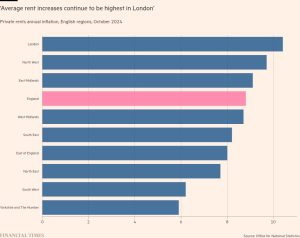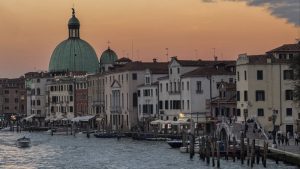Lawrence Murray Dixon – the man who made the Magic City
The cocktail bar of The Raleigh used to look a little louche. And not in a hip way. A decade ago it could have been the lounge of a seaside B&B or a small yacht club in a small coastal town. But somehow, surprisingly, it always seemed to remain one of Miami’s places to be.
Very little was visible of the bar’s original and glamorous art deco incarnation, in which there had been extravagant murals of some Hollywood-imagined renaissance forest feast. The mirrors behind the bar had gone; the bar itself had been replaced, along with the built-in banquette. But just at the entrance to this intimate room, one thing had survived intact – and oddly, it’s the thing I remember most vividly: set into the terrazzo floor was an image of a cocktail glass with bubbles fizzing into the now slightly stale air. It was a little reminder of a kind of kitsch glamour that made Miami Beach the coolest destination in the US, a cool that seems to linger, set not only by its icy cocktails but by its architecture.



Built in the 1940s, The Raleigh was designed by Lawrence Murray Dixon, one of the most prolific and inventive architects of the era and, arguably, the architect who did more than any other designer to make Miami Beach the instantly recognisable art deco cityscape so familiar to us today. The hotel has languished since it was damaged by Hurricane Irma, which came out of the Caribbean in 2017 and smashed into Florida in what became known as “Irmageddon”. Over the past few decades, The Raleigh washed through developers’ hands like seawater, having been bought by boutique-hotel pioneer André Balazs in 2002 (for $25.5mn) and again in 2014 by Tommy Hilfiger (who had plans to turn it into a membership-based hotel) for $56.6mn. Now it – along with two other adjacent hotels, also designed by Dixon – is finally being extensively and expensively reconstructed into something resembling the original deco finery. They will also be supplemented (if that’s the right word) with a huge condo tower designed by architect Peter Marino to create a new architectural ensemble at the heart of the Beach.
It’s a good moment, then, to reconsider Miami’s incredible architectural legacy. At the beginning of the 20th century it was Nowheresville. By the 1920s it had grown into a small city of Mediterranean revival mansions and upmarket holiday homes. When developers arrived with bigger ideas in the 1930s to make it into an affordable but elegant destination for East Coasters escaping harsh winters, they realised they needed to make it look like a city rather than a suburb. And that’s when two architects in particular, Henry Hohauser and Lawrence Murray Dixon, came down from New York to inject some of that city’s grandeur, swagger and modernity into Miami’s sleepy, palm-lined plan.
Hohauser (1895-1963), who built a series of superb hotels and apartment houses, was a transplanted New Yorker. The younger Dixon (1901-1949) had gone north from Florida to work with architects Schultze & Weaver (architects of the Los Angeles Biltmore Hotel and New York’s towering Waldorf Astoria and the Pierre), picking up the scenography of the city, the newly emerging skyscraper aesthetic, the stepped crowns and parapets, the setbacks and masts, the neons and the rich deco decorations. He was coming home to Florida, determined to make an impression.


At first, when Dixon returned from Manhattan in 1929, leaving the city in the throes of the Wall Street crash, he was designing modest neo-Mediterranean homes in the Hollywood style. But Miami needed its own image, and it needed to make itself look successful and desirable in double-quick time. Its developers and its architects, with Dixon at the forefront, settled on art deco to do the job: the blocky, cheery, moderne style then so fashionable, an architecture designed to be seen from automobiles and streamlined so it looked like it was going places. For a decade from the mid-1930s, Dixon designed a succession of inventive, distinctive and sleek buildings, which brought a taste of Manhattan to Miami. He also brought with him Manhattan’s totem, the stepped, set-back form of the skyscraper.
It was a curious transplant. The skyscraper was a product of the land values in the constricted centres of Chicago and NYC; Miami had no real shortage of land, so the skyscraper forms here were really for show – theatrical representations of an emerging, modern metropolis. The Grossinger Beach Hotel (1939), for instance, was piled into a skyscraper form with an offset stack of towers to give a little extra height, while the Tiffany Hotel attenuated its curved corner with a tall neon sign. These crowns and masts were more signposts – efforts to make the buildings stand out against the skyline and give them a recognisable profile on postcards and matchbooks. The Atlantis, demolished in 1973, was also stacked into a mini-Manhattan tower.
Those semi-skyscrapers were complemented by dozens more low-rise buildings, the sort of small hotels, apartment houses and stores that constituted the fabric of Miami’s emerging streetscape. That those streets today look so coherent and survived so well is one of the wonders of South Beach. Allan Shulman, an architect and professor at the University of Miami School of Architecture, explains the moment. “These architects, particularly Dixon and Hohauser, were moving towards a collective position,” he says. “This was a still-peripheral American city, and they were not so much trying to express their personal styles but developing something together, with the other architects.”

It’s an unusual proposition that these competitive commercial architects conceived South Beach as a collective project. The interesting thing is that Dixon – who remains a figure unilluminated by history – was a rather conservative designer. You only need to look at the house he designed for himself on Fairgreen Drive, an extremely modest little Mediterranean revival home with a kind of Regency porch, its interior filled with Biedermeier-type furniture, remarkably understated for the architect who was at that moment defining the deco dazzle of the Beach. “He was also the first to reintroduce that more conservative Georgian style during the war,” Shulman tells me. “A change to match the different times.” The Betsy Ross Hotel (now The Betsy), with its southern-style porch, exemplifies the shift. Dixon was a magpie, happy to switch styles and flit between designs, taking what he needed from wherever he needed it.
In 2019, real estate developer Michael Shvo bought The Raleigh and its neighbouring hotels in a joint venture for $103mn. “There are two types of architects,” Shvo tells me over Zoom from his yacht moored on a dazzling Greek island. “There are architects who build the same work wherever it is, and there are architects who build what is appropriate to the place they are designing for.” He points to Dixon’s designs for the hotel’s extraordinary pool. “I think Life magazine called it the most beautiful pool in America. Its shape was inspired by Walter Raleigh’s coat of arms. It’s so random, but it’s also become a symbol of Miami Beach.”

Dixon clearly fancied a bit of medieval or renaissance. There were pictures of Raleigh in the hotel and there were those curious wooded murals in the cocktail bar. Shulman says: “Dixon had a softer approach to modernism, blending it with more traditional influences.” But he could also handle just about every manifestation of modernism itself, from the avant-garde European to the curves of expressionism. Take the 1937 Seymour Building, with its gorgeous, curved glass storefront – it could easily be the lower floors of something designed by German modernist Erich Mendelsohn. In fact, The Raleigh itself, with its curved corner and asymmetrical massing, could be a Mendelsohn. Certainly, Dixon would have been aware of his work, perhaps particularly his British period in which he co-designed the 1935 De La Warr Pavilion in Bexhill-on-Sea (you will not often find South Beach and Bexhill in the same sentence). You can see the influence in The Raleigh’s lovely pool pavilion, currently being restored, with its squat round tower and nautical decks.
In his run of late-1930s buildings like the Forde Ocean, the Flamingo and the Fairview Apartments, Dixon experimented with a kind of continental modernism: sleek and chic, very different from the pistachio and strawberry ice-cream kitsch of most of Miami Beach. The Caribbean apartments, for instance, could almost be in Hove or Hastings.
But mostly Dixon did deco. He gave the clients what they wanted, the tourists what they expected and Miami what it needed. Those small hotels and apartment buildings (such as the McAlpin and South Seas Hotels and 1525 Meridian Avenue) are symmetrical, friendly and sherbet-coloured. And a big part of his success was cost. Deco was cheap, easy to build (shoddy workmanship could be covered by a layer of plaster slathered on like ice-cream). Builders could knock it out and deco became ubiquitous. They stripped the expensive ornaments from the Paris and New York versions but they adopted the stepped profiles and setbacks – those little tricks stolen from the skyscrapers also worked for creating terraces and balconies (better than they did 40 storeys up in New York, where the wind would strip your stubble off).
The names themselves – the Fairmont, the South Seas and the Beach Plaza, the Tides and the Senator – strain to evoke exactly the right mix of exoticism and familiarity, classiness and brassiness. Each was topped by neon, contributing to a new kind of architecture – what the German expressionists called Lichtarchitektur or light architecture – in which neon created new combinations of form so that, after dusk, the architecture could become something else. The Raleigh’s big slender letter “R” was a perfect example, its cool glow accentuating its height.


A huge restoration project is now being initiated by Shvo. “It was important to get all three of these hotels together,” he says of the development, “because they form a kind of masterplan – the best of Dixon’s work. But the buildings had a lot of changes made to them. Years of additions. We obsessed for three years about how to restore The Raleigh with all its details. We used diagnostics to find which surfaces out of all the layers were the originals and peeled them back like an onion. The buildings were often put up cheap and quick, so we’ve replaced them using the same materials but better quality.” The restoration and rebuilding is being overseen by the knowledgeable, flexible and biker-leather-clad Peter Marino, an architect who has become one of the favourites of the super-rich and the art elite. “It is a great challenge to reimagine Murray Dixon’s masterpiece,” he says of his involvement. “Our goal was to reinvigorate the jewel from 1940, with a fresh perspective that honours Miami Beach’s art deco style but also modernises the design for today’s world.”
A couple of years after he completed The Raleigh, Dixon signed up, becoming a major in the Corps of Engineers where he switched his talents to designing a more functional architecture for the military. By the time he returned after the war, styles had shifted again. Others designed the big blockbusters, The Delano, The Fontainebleau and The Eden Roc, in a more midcentury manner. Dixon died at the surprisingly young age of 48. His career coincided perfectly with the rise and perfection of Miami style. The Raleigh, though, encapsulates his enduring legacy. It’s true that it had a stint as a kosher hotel, where its ballroom was adapted as a synagogue. It’s true that the richness of its details was slowly stripped away by time and obscured by the accretions of the years. But it somehow always managed to be an epicentre of cool, the place to be – until, that is, it met Irma. Now it’s coming back, the centrepiece of a perfect ensemble of Lawrence Murray Dixon, and a great testament and monument to Miami’s most influential designer.
#Lawrence #Murray #Dixon #man #Magic #City









